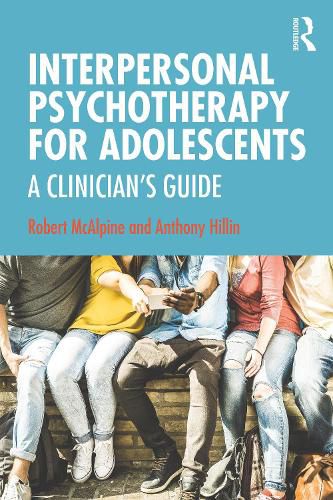Readings Newsletter
Become a Readings Member to make your shopping experience even easier.
Sign in or sign up for free!
You’re not far away from qualifying for FREE standard shipping within Australia
You’ve qualified for FREE standard shipping within Australia
The cart is loading…






Interpersonal psychotherapy for adolescents (IPT-A) is a comprehensive guide for clinicians. It will enable readers to add IPT-A to their clinical repertoire or to deepen their existing practice of IPT-A, using a time-limited, evidence-based intervention that is engaging for young people.
The guide outlines the structure, skills, and techniques of IPT-A, utilising real-life encounters in the therapy room that reflect the diverse nature of adolescents and young adults who present for therapy. It provides the reader with a bird’s-eye view of how IPT-A works. It expands the range of IPT-A clinical tools, techniques, and models to assist the reader to work effectively with a wide range of clients. The book provides a new protocol for the psychological assessment of young people, acknowledging the importance of culture and spirituality alongside the biological, psychological, and social dimensions that have previously comprised assessment. The importance of the clinician forming a transitory attachment relationship with the client is emphasised throughout.
The target audience for this book is mental health clinicians, including psychologists, psychiatrists, social workers, mental health nurses, occupational therapists, general practitioners with a mental health focus, and students from these professions.
$9.00 standard shipping within Australia
FREE standard shipping within Australia for orders over $100.00
Express & International shipping calculated at checkout
Interpersonal psychotherapy for adolescents (IPT-A) is a comprehensive guide for clinicians. It will enable readers to add IPT-A to their clinical repertoire or to deepen their existing practice of IPT-A, using a time-limited, evidence-based intervention that is engaging for young people.
The guide outlines the structure, skills, and techniques of IPT-A, utilising real-life encounters in the therapy room that reflect the diverse nature of adolescents and young adults who present for therapy. It provides the reader with a bird’s-eye view of how IPT-A works. It expands the range of IPT-A clinical tools, techniques, and models to assist the reader to work effectively with a wide range of clients. The book provides a new protocol for the psychological assessment of young people, acknowledging the importance of culture and spirituality alongside the biological, psychological, and social dimensions that have previously comprised assessment. The importance of the clinician forming a transitory attachment relationship with the client is emphasised throughout.
The target audience for this book is mental health clinicians, including psychologists, psychiatrists, social workers, mental health nurses, occupational therapists, general practitioners with a mental health focus, and students from these professions.